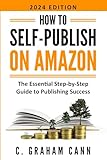ONIX: The Book Jacket of the Future
The Association of American Publishers, along with the major online booksellers and distributors, create a standard for online book information exchange.

Take a browse through any of the major online bookstores, and you'll notice that some books have cover art, descriptions, review and other information (known as metadata), and others list nothing but the title, author and price.
Metadata plays a large role in online book sales (titles with metadata outsell those without, eight to one) so it is in the best interests of both bookstores and publishers to include metadata for as many titles as possible.
The problem thus far has been that each bookstore wants their metadata submitted in different formats and different methods, so submitting a whole backlist to each of them can be a huge chore for even medium-sized publishers.
Enter ONIX
In order to solve this problem, the Association of American Publishers (AAP), along with representatives from the major online booksellers and book information sources, created a set of guidelines for ONline Information eXchange (ONIX).
ONIX is a subset of XML intended to establish a standard descriptive language for describing bibliographic and promotional information among publishers, wholesalers, retailers and anyone else involved in the sale of books.
ONIX uses a series of data elements (148 of them, to be exact) that describe book information. The data elements are simple identifiers enclosed in angle brackets. For example, the tag <a01> is used to indicate an ISBN, while <d01> identifies the title.
Of the 148 elements, 42 are designated as the kernel - the bare minimum that every publisher should supply about every book, though not all the kernel elements will apply to every book, and many of the non-kernel elements are very desireable to include as well.
While it might sound complex, in reality ONIX is a simple format for even small publishers with limited budgets. ONIX formatted files can be created with something as simple as a text editor or Microsoft's free XML Notepad.
None of the online booksellers have any information on their sites about when they will be ready to accept documents in ONIX format, but in the meantime, it would be wise for all publishers to familiarize themselves with the basic structure of ONIX.
The full documentation can be downloaded in MS Word or PDF format from the AAP site at www.publishers.org/onix.htm.
by Wendy Woudstra
Read These Next
Children’s Book Publishers - How to Wow Them With a Perfect Query Letter
In a perfect world, you’d be able to pitch your manuscript to an editor over a leisurely cup of coffee. But we’re forced to inhabit the real world, where you’ve got about 10 seconds to hook an editor before she decides to continue reading or reach for her form rejection slip. And more and more, this "hook" must come in the form of a query letter.
How Authors Can Use Listmania to Promote Their Book
The internet provides a dizzying array of book marketing options that authors can utilize to promote their books. One that is often overlooked is Amazon’s Listmania lists. Here’s a how-to, step by step that’ll show you how to create a Listmania list on Amazon.
Are eBooks Creating New Opportunities for Short Story Writers?
At the end of the 19th and beginning of the 20th centuries, short stories were arguably the most popular form of fiction in America. Since then the short story has taken quite a hit, but digital publishing is poised to bring the literary form back into the public view.







 Self-Publishing for Dummies (For Dummies: Learning Made Easy)
Self-Publishing for Dummies (For Dummies: Learning Made Easy) Write. Publish. Repeat. (The No-Luck-Required Guide to Self-Publishing Success)
Write. Publish. Repeat. (The No-Luck-Required Guide to Self-Publishing Success) Self Publishing To Amazon KDP In 2024 - A Beginners Guide To Selling E-books, Audiobooks & Paperbacks On Amazon, Audible & Beyond
Self Publishing To Amazon KDP In 2024 - A Beginners Guide To Selling E-books, Audiobooks & Paperbacks On Amazon, Audible & Beyond How to Self-Publish Your Book: A Complete Guide to Writing, Editing, Marketing & Selling Your Own Book
How to Self-Publish Your Book: A Complete Guide to Writing, Editing, Marketing & Selling Your Own Book Self-Publishing: The Secret Guide To Becoming A Best Seller (Self Publishing Disruption Book 2)
Self-Publishing: The Secret Guide To Becoming A Best Seller (Self Publishing Disruption Book 2) Self Publishing To Amazon KDP In 2023 - A Beginners Guide To Selling E-books, Audiobooks & Paperbacks On Amazon, Audible & Beyond
Self Publishing To Amazon KDP In 2023 - A Beginners Guide To Selling E-books, Audiobooks & Paperbacks On Amazon, Audible & Beyond How to Self-Publish on Amazon: The Essential Step-by-Step Guide to Publishing Success
How to Self-Publish on Amazon: The Essential Step-by-Step Guide to Publishing Success Self-Publisher's Legal Handbook: Updated Guide to Protecting Your Rights and Wallet
Self-Publisher's Legal Handbook: Updated Guide to Protecting Your Rights and Wallet 14 Steps to Self-Publishing a Book
14 Steps to Self-Publishing a Book Self-Publishing Simplified: How to Publish a Book on Amazon KDP for Beginners
Self-Publishing Simplified: How to Publish a Book on Amazon KDP for Beginners